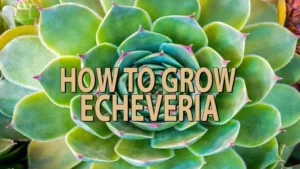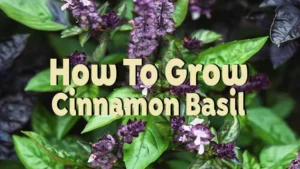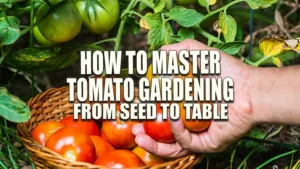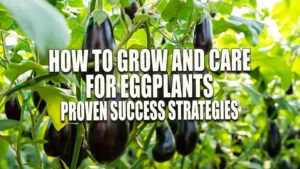A Beginner’s Guide to Organic Matter: Transform Your Garden with Ease
- July 2, 2024
- 0 comment
Dive into A Beginner’s Guide to Organic Matter and effortlessly boost your garden’s health and productivity. Start your journey to a lush, vibrant outdoor space now. Ever noticed how some gardens are vibrant and full of life while others seem to lag behind? The difference often lies in one key element: organic matter. This beginner’s guide will show you how simply adding organic matter can significantly improve your garden’s health and productivity.

Ideal for both novice gardeners and those looking to enhance their existing setups, we’ll delve into the practical benefits of incorporating this natural soil booster. Get ready to learn how you can turn your garden into a thriving, lush space. Let’s get started!
Table of Contents on Beginner’s Guide to Organic Matter
- Understanding Organic Matter
- Benefits of Organic Matter in Your Garden
- How to Integrate Organic Matter into Your Garden
- Maintaining Your Garden with Organic Matter
- Advanced Techniques for Experienced Gardeners
- Evaluating Soil Composition Before Adding Organic Matter
- Conclusion
- FAQs
Understanding Organic Matter
What is Organic Matter?

Organic matter comprises decomposing plant and animal materials that significantly enrich soil quality. Common types include compost, manure, leaf mold, and grass clippings. These vary not only in nutrient content but also in how quickly they break down, influencing their effectiveness in soil amendment.
Types of Organic Matter and Their Properties
| Type of Organic Matter | Nutrient Content | Decomposition Rate | Common Uses |
|---|---|---|---|
| Compost | High in N, P, K | Moderate to fast | General soil improvement, planting beds |
| Manure | High in N | Slow to moderate | Fertilizer for growth phases |
| Leaf Mold | Low in nutrients | Slow | Improves soil structure, moisture retention |
| Grass Clippings | High in nitrogen | Very fast | Quick nutrient release, mulching |
Nutrient Dynamics
The nutrient dynamics of organic matter are crucial for soil health. For example, compost generally contains a balanced mix of nitrogen (N), phosphorus (P), and potassium (K), which are essential for plant growth. Manure, which is richer in nitrogen, can accelerate growth but must be used carefully to avoid nitrogen burn. Leaf mold, while lower in nutrients, excels in enhancing soil structure and moisture retention.
Scientific Analysis of Organic Matter’s Role in Soil Health
Adding organic matter to soil not only improves its physical structure but also enhances its biological and chemical properties. Here’s how:
- Physical Benefits: Organic matter increases soil porosity, which enhances air and water movement. It also helps in root penetration and moisture retention, crucial for plant health.
- Biological Benefits: As organic matter decomposes, it feeds soil microorganisms, which play a key role in nutrient cycling. This bioactivity also helps suppress diseases.
- Chemical Benefits: Organic matter acts as a buffer, moderating soil pH and making nutrients more available to plants. It also binds with heavy metals, reducing their availability and toxicity.
Impact on Water Retention and Drainage
Organic matter’s sponge-like properties significantly influence water dynamics within the soil. During dry conditions, it retains moisture, providing a reservoir for plant roots. Conversely, in wet conditions, it helps improve drainage, preventing waterlogged roots, which can lead to plant diseases.
Benefits of Organic Matter in Your Garden
Enhancing Soil Fertility

Organic matter is crucial for maintaining high soil fertility. It slowly releases essential nutrients such as nitrogen (N), phosphorus (P), potassium (K), and a range of micronutrients that plants need to thrive. This release happens through the process of mineralization, where microorganisms break down organic matter into elements usable by plants.
Nutrient Release from Different Types of Organic Matter
| Type of Organic Matter | Nitrogen (%) | Phosphorus (%) | Potassium (%) |
|---|---|---|---|
| Compost | 0.5 – 3 | 0.5 – 2 | 1 – 2 |
| Manure | 0.5 – 1.5 | 0.2 – 0.8 | 0.5 – 1.5 |
| Leaf Mold | 0.2 – 0.5 | 0.1 – 0.3 | 0.3 – 0.7 |
| Grass Clippings | 2 – 4 | 0.5 – 1.0 | 1.0 – 2.0 |
These numbers show the variability in nutrient content, which can significantly influence soil fertility and, consequently, plant growth. Organic matter provides a more stable nutrient release compared to synthetic fertilizers, which can lead to nutrient spikes and troughs, stressing plants and potentially leading to nutrient runoff.
Supporting Plant Health
Incorporating organic matter into soil does more than just supply nutrients; it enhances the overall ecosystem within the soil. It boosts the population and diversity of beneficial microorganisms, which are instrumental in decomposing organic material, suppressing pathogenic microbes, and maintaining healthy soil structure. This biological activity is critical for nutrient cycling and disease suppression.
Environmental Impact
The environmental benefits of using organic matter in gardening are profound:
- Waste Reduction: Organic gardening practices recycle biological waste that would otherwise contribute to landfill growth.
- Chemical Reduction: By providing a natural source of nutrients, organic matter decreases the need for chemical fertilizers, which can contaminate water sources and disrupt local ecosystems.
- Water Conservation: Organic matter improves the soil’s ability to retain water, reducing the need for frequent watering and enhancing drought resistance.
Carbon Sequestration
Organic matter plays a vital role in carbon sequestration, helping to capture and store atmospheric carbon dioxide in the soil. This not only mitigates the impact of carbon on climate change but also enhances soil quality and fertility. Scientific studies indicate that increasing organic matter in soil can sequester up to an additional 0.1% to 0.5% carbon per year, significantly impacting carbon levels over time.
How to Integrate Organic Matter into Your Garden
Preparation and Application

Selecting the right type of organic matter is crucial for maximizing the benefits to your garden. Here’s a more detailed look at your options:
- Compost: An all-rounder in gardening, compost is rich in nutrients and supports a balanced soil pH. It is made from decomposed garden and kitchen waste, making it a sustainable choice for enriching garden beds.
- Manure: Provides high levels of nitrogen, essential for leafy growth. It must be well-composted to destroy pathogens and reduce odor. Horse, cow, and chicken manure are commonly used.
- Leaf Mold: Primarily composed of decomposed leaves, leaf mold excels in improving soil structure and moisture retention. It’s particularly useful in sandy soils where water retention is a challenge.
When applying organic matter:
- General Beds: Spread a layer of 2-4 inches of organic matter over your garden beds. Work it into the top 6-8 inches of soil to integrate it fully and avoid disrupting root systems.
- Potted Plants: Mix a handful of compost or leaf mold into your potting soil to boost nutrient levels and improve moisture retention.
Recommended Organic Matter Application Rates
| Soil Type | Organic Matter Type | Application Rate (cubic yards per 1000 sq ft) |
|---|---|---|
| Sandy | Compost, Leaf Mold | 3-4 |
| Clay | Compost, Manure | 2-3 |
| Loamy | Compost | 2-3 |
| Highly Organic | Leaf Mold, Compost | 1-2 |
Quantity and Timing
The application of organic matter should be tailored not only to the type of soil but also to the seasonal needs of the garden:
- Sandy Soils: These require more frequent additions of organic matter due to their poor nutrient and water retention capabilities. Applying organic matter in both spring and fall can dramatically improve moisture retention and nutrient levels.
- Clay Soils: Benefit from the structure improvement provided by organic matter, which should be added in the fall to allow winter weather to help incorporate the material into the soil.
- Timing Considerations: Spring applications energize the soil for peak growing season, enhancing plant growth and health. Fall applications focus more on improving soil structure and preparing the soil for winter, aiding in the decomposition process and nutrient release.
Integrating organic matter effectively requires an understanding of both the type of organic matter and the specific needs of your soil and garden plants. By adjusting the type, quantity, and timing of your applications, you can optimize your garden’s health and productivity.
Maintaining Your Garden with Organic Matter
Regular Maintenance Tips

To maintain optimal soil health, it’s important to replenish organic matter regularly. Over time, as organic materials decompose, their levels in the soil decrease, necessitating annual additions. This not only sustains the nutrient levels but also keeps the soil structure ideal for plant growth. In gardens, a top-up of compost or leaf mold in the planting season can invigorate the existing plants and prepare the beds for new plantings.
Monitoring the soil’s organic content is also crucial. A simple soil test can reveal the organic content and help gauge when additional matter is needed. Consistently maintaining organic matter not only enriches the soil but ensures it remains vibrant and productive year after year.
Troubleshooting Common Issues
While organic matter generally improves garden health, there are instances where it might not perform as expected. If plants are still struggling despite adequate organic matter, consider the following:
- Excessive Application: Too much organic matter can lead to nitrogen immobilization, where the soil microbes consume more nitrogen than they release, starving the plants. If symptoms of nitrogen deficiency appear, reduce the organic matter application or supplement with a mild organic fertilizer.
- Inappropriate Material: Ensure that the organic matter used is appropriate for your soil type and plant species. Some materials, like fresh sawdust or uncomposted leaves, can temporarily bind up nutrients needed by plants.
- Decomposition Rate: Slow-decomposing materials can take longer to release nutrients. If immediate nutrient availability is needed, consider using more finely decomposed organic matter.
Addressing these issues promptly can help restore the balance and functionality of your garden’s soil, ensuring that the use of organic matter remains a beneficial practice.
Advanced Techniques for Experienced Gardeners
Creating Your Own Compost

Creating your own compost is a sustainable practice that converts kitchen scraps and yard waste into nutrient-rich soil amendment. Here’s how to optimize your composting process:
- Materials: Balance your compost pile with ‘greens’ such as vegetable peelings (high in nitrogen) and ‘browns’ like dried leaves (high in carbon). The ideal carbon to nitrogen ratio (C) should be approximately 30:1 for efficient decomposition.
- Aeration and Moisture: Regular turning introduces oxygen necessary for aerobic decomposition and helps maintain the right moisture level. Your pile should be as wet as a wrung-out sponge.
- Monitoring: Use a compost thermometer to monitor the pile’s temperature. A well-maintained pile should reach 140-160°F, which kills most seeds and pathogens.
Composting Parameters for Optimal Results
| Parameter | Ideal Condition |
|---|---|
| Carbon to Nitrogen Ratio | 30:1 |
| Moisture Content | 40-60% (like a wrung-out sponge) |
| Temperature | 140-160°F |
| Turning Frequency | Every 2-4 weeks |
Using Organic Mulches
Mulching is a technique that not only conserves moisture and suppresses weeds but also enhances soil health as it decomposes:
- Types of Mulches: Different organic mulches have varying rates of decomposition. Straw and grass clippings decompose quickly, enriching the soil with nutrients, while bark and wood chips decompose slowly, providing longer-lasting soil coverage.
- Application Techniques: Apply a 2-3 inch layer of mulch around plants, avoiding direct contact with plant stems to prevent rot. Consider the specific needs of your plants; some may benefit from the cooling effect of mulch, while others, like xeriscape landscapes, might require minimal mulching to prevent moisture retention.
- Nutrient Contribution: As mulch decomposes, it slowly releases nutrients into the soil. The rate of nutrient release depends on the type of mulch used.
Nutrient Release Rates of Common Organic Mulches
| Type of Mulch | Nitrogen Content | Decomposition Rate |
|---|---|---|
| Straw | Low | Fast |
| Bark | Very Low | Slow |
| Shredded Leaves | Medium | Moderate |
| Grass Clippings | High | Very Fast |
Nutrient Timing: Apply nutrient-rich mulches like grass clippings during the growing season to support plant growth. Use slower-decomposing mulches like bark in perennial beds for longer-lasting effects.
By understanding and applying these advanced techniques, experienced gardeners can significantly enhance their garden’s productivity and sustainability. These methods not only improve soil quality and plant health but also contribute to a more environmentally friendly gardening practice.
Evaluating Soil Composition Before Adding Organic Matter
Purpose
Before you begin enriching your garden with organic matter, it’s essential to understand the existing soil composition. This initial evaluation will guide you in selecting the appropriate type of organic matter and determining the correct amounts to use. Soil that’s already rich in certain nutrients will require different treatment compared to soil that’s deficient.
Tools and Techniques
- Collecting Soil Samples: The first step is to collect soil samples from various parts of your garden. Use a clean tool, such as a garden trowel or a soil auger, to collect soil from a depth of 3-6 inches. Gather samples from several locations to get an accurate representation of your garden.
- Where to Test: You can either use a home testing kit for immediate results or send the samples to a local agricultural extension service for a more comprehensive analysis. The extension service can provide detailed insights into pH, nutrient levels, and organic content.
- How to Sample: Mix soil from different spots in your garden to form a composite sample. This mixed sample should be air-dried and free from debris like stones and organic waste.
Interpreting Results
- pH Level: The pH of your soil determines how well plants can absorb nutrients. Most garden plants thrive in soil with a pH between 6.0 and 7.0. If your soil is too acidic or too alkaline, adding the right type of organic matter can help balance the pH.
- Nutrient Levels: Key nutrients to look for include nitrogen (N), phosphorus (P), and potassium (K). The results will indicate whether your soil is deficient, balanced, or excessive in these nutrients. For instance, a nitrogen-deficient soil can be amended with coffee grounds or manure, both rich in nitrogen.
- Soil Type: Knowing whether your soil is clay, loam, or sandy is crucial. Organic matter behaves differently in each type:
- Clay soils benefit from organic matter that improves aeration and drainage.
- Sandy soils will retain water better with the addition of organic matter.
- Loamy soils, being well-balanced, require less organic matter but benefit from periodic enrichment to maintain their structure and fertility.
Related Post
- How to Build a Barn: A Step-by-Step Guide for Beginners
- How to Build a Sustainable Compost Bin: Easy and Eco-Friendly DIY
- How to Fertilize Bougainvillea: A Complete Guide for Stunning Blooms
- How to Fertilize Apple Trees: Essential Tips for a Bountiful Harvest
- How to Fertilize Lemon Trees: Secrets for Thriving Citrus
- How to Fertilize Avocado Tree: A Step-by-Step Guide for Lush Growth
- 10 Best Bow Saws to Buy in 2024: Top Picks for the Money
- Best Miter Saw For Beginners
- Top 10 Pruning Saws to Buy in 2024: Best for the Money
- 7 Best Pocket Chainsaw
Conclusion
Incorporating organic matter into your garden is a simple yet profound way to enhance soil fertility, support plant health, and contribute positively to the environment. Whether you’re spreading compost, adjusting mulch, or creating a new compost pile, each step you take builds towards a healthier garden ecosystem. With the tips and techniques outlined in this guide, you are well-equipped to transform your garden into a thriving, sustainable space.
FAQs
- What is the best type of organic matter for vegetable gardens?
Compost is generally the best type of organic matter for vegetable gardens because it provides a balanced mix of nutrients and improves soil structure. Well-rotted manure can also be beneficial, especially for nutrient-hungry crops. - How often should I add organic matter to my soil?
It’s ideal to add organic matter at least once a year, typically in the spring or fall. This helps maintain soil fertility and structure as organic matter decomposes over time. - Can I use leaves as organic matter in my garden?
Yes, leaves are an excellent source of organic matter. Shredded leaves can be used as mulch or composted before being added to the garden beds. They help improve soil structure and add nutrients as they decompose. - Is there such a thing as too much organic matter?
While organic matter is beneficial, excessive amounts can lead to nitrogen immobilization, where microbes tie up nitrogen as they break down large quantities of organic materials, temporarily making it unavailable to plants. It’s important to balance the amount added. - How does organic matter affect water retention in sandy soils?
Organic matter significantly improves water retention in sandy soils by enhancing the soil’s structure and increasing its ability to hold water, reducing the need for frequent watering. - What should I do if my garden has heavy clay soil?
Adding organic matter is one of the best ways to improve heavy clay soils. It breaks up the dense particles, allowing better air and water movement and making it easier for roots to grow. - Can I use fresh grass clippings as organic matter directly on my beds?
Fresh grass clippings can be used directly as mulch around plants, but they should be applied in thin layers to prevent matting, which can block water and air flow. Composting them first is generally recommended to avoid issues like heat build-up and nitrogen immobilization. - Are there any plants that might not benefit from organic matter?
Most plants benefit from organic matter, but some native or xeriscape plants adapted to poor, dry soils may thrive better without added organic materials, which could alter the soil conditions more than desired.
Ready to enrich your garden? Start incorporating organic matter today and watch as your garden transforms into a healthier, more vibrant space. Happy gardening!

Kristine Moore
Forestry AuthorI'm Kristine Moore, a seasoned garden landscaping professional with over 30 years of experience. My extensive career has been dedicated to transforming outdoor spaces into stunning, sustainable landscapes. With a deep understanding of horticulture, design principles, and environmental stewardship, I have become a respected figure in the field, known for creating harmonious, visually appealing, and eco-friendly gardens. My commitment to excellence and continuous learning in landscaping trends and techniques has solidified my reputation as an expert in garden design and implementation.












Leave your comment